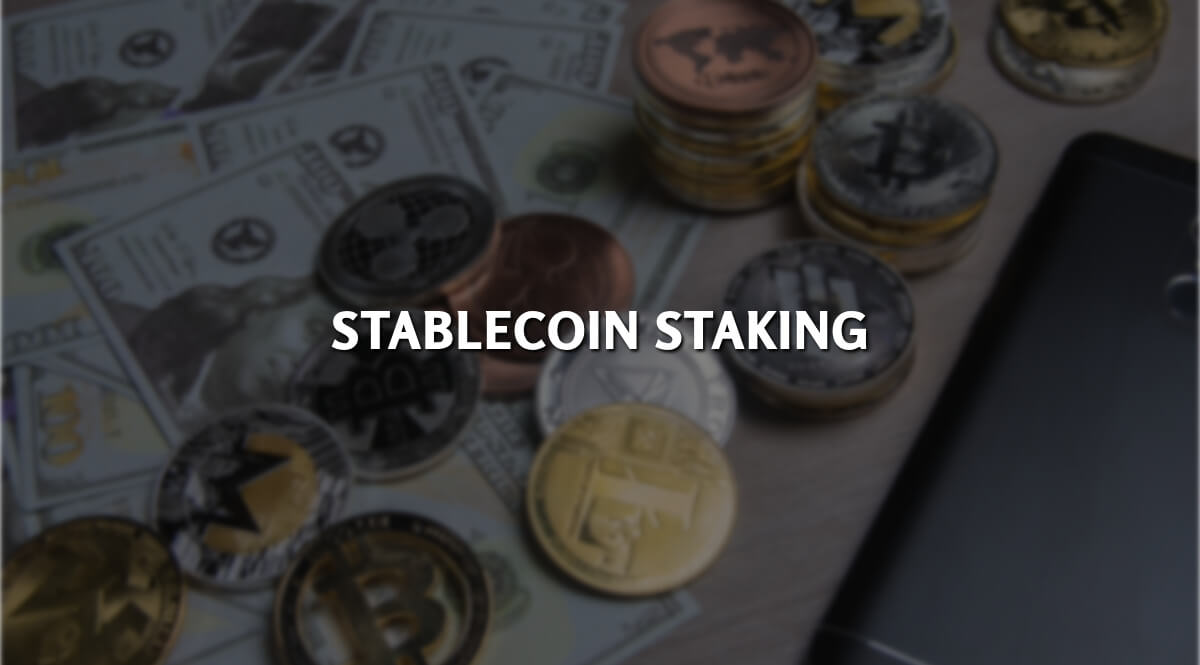What is stablecoin staking, and how does it work nowadays?
Key Takeaways:
Stablecoins are specific cryptocurrency with a stable value thanks to pegging to another asset.
They aim to be the top alternative to popular cryptocurrencies.
The staking proces involves operating on a Proof of Reserve system, lending them to a Decentralized Finance (DeFI) protocol or platform.
The best stablecoins are Tether, DAI, and USD Coin.
Have you ever thought about what stablecoin staking is and how it works nowadays? Consider investing in this type of altcoin with the emerging news in the crypto sphere.
Before we get to stablecoin staking and getting all the pros and cons of that very common activity, it’s always crucial to get to know all about the coin you wish to deal with.
In the first place, is it worth investing in? What is its latest news? Let’s explore more about the stablecoin, before we explain how the staking work, shall we?
What is stablecoin?
A stablecoin refers to a specific cryptocurrency with a stable value thanks to pegging to another asset. That asset could represent a fiat currency such as EUR, GBP, USD, JPY, or gold.
Traders and investors often use stablecoins for various financial services on the blockchain, like buying things.
The main point behind the stablecoin is that it offers one of the best alternatives to the high volatility of the current mostly traded currencies. That makes them more suitable for daily transactions.
How do Stablecoins keep their value?
Stablecoins maintain value in the following manner: The form of crypto has been established to preserve consistent value by anchoring their current value on the market to the outward reference.
Note that this particular reference can be some popular currency such as the Euro, a commodity like gold or silver, or some other high-value asset in the financial market.
Stablecoins aim to be the top alternative to popular cryptocurrencies like Bitcoin, Ethereum, and Dogecoin. For that reason, digital assets are less practical for daily use.
How do staking stablecoins work?
If you’re wondering how staking stablecoins works and whether they are safe or not, it’s important to note that they can be staked. However, the process of staking doesn’t involve transaction validation.
It involves operating on a Proof of Reserve system, lending them to a Decentralized Finance (DeFI) protocol or platform.
Thanks to this activity, the supply liquidity to the network is added. Thus, traders who are staking stablecoins earn rewards for this.
What are the diverse types of Stablecoins?
As a motivated trader or investor, you should know that stablecoins are classified into the three following categories:
Non-collateralized (algorithmic)
Fiat-collateralized
Crypto-collateralized.
Stabilized coins that include fiat collateral are linked to a certain asset. That asset could be either gold or fiat money. The company behind the stablecoin holds a reserve of assets to keep the virtual money stable.
Conversely, Non-collateralized stablecoins use software algorithms to adjust their supply in response to demand to maintain stable price algorithms.
The Purpose of Stablecoins in the Cryptocurrency Ecosystem
Once you’ve learned what stablecoin staking is and its thee types, it’s time to see its primary role within the cryptocurrency ecosystem. Long story short, stablecoins do play a vital role, aiming to enable the security and speed of Blockchain technology.
They do so with the elimination of the volatility that the majority of cryptos endure. Firstly, stablecoin traders use them to buy cryptocurrencies on platforms that don’t accept regular currencies like dollars or euros.
The main goals of this examination are to protect investors and preserve the financial system’s stability.
Thus, stablecoins’ popularity and adoption skyrocketed in the market among numerous traders. For their fantastic abilities, traders use stablecoins in numerous blockchain-based financial services. Some of them are lending platforms, for example.
Note that stablecoins could also be utilized for purchasing diverse goods and services globally.
What is the Regulation of Stablecoins?
Before getting involved with the stablecoin staking, it’s important to see its regulation. In short, regulations mean being 100% positive about the explosive potential impact and growth of stablecoins in the huge financial system.
Regarding global regulatory agencies, we can tell that their primary job is to monitor stablecoins simultaneously while their market grows.
The main reason is to ensure they comply with financial regulations and rules. Remember that protecting investors, along with preserving the stability of the financial system, represent the main goals of this examination.
Is staking stablecoins safe?
One of the main questions for traders is – “Is staking stablecoins safe?” Should you, without any hesitation, invest your time and energy in staking stablecoins?
First of all, the answer is yes, you can relax. Stablecoin staking is undoubtedly one of the safest activities in the market nowadays.
However, there could always be potential risks that you need to consider. It all depends on the market conditions.
It’s crucial to comprehend that stablecoins provide a great chance for earning passive income via staking.
It means that individual traders, investors and businesses can make their funds function for them with interest earning.
For these reasons, stablecoins are fantastic opportunities to generate passive income and are great for value storage.
What are the highest apy stablecoin staking?
Even though there are numerous available stablecoins in the market, it is crucial to note which are the best and most profitable ones!
We’ve provided you a short list of the most popular stablecoins for staking that are available on major crypto exchanges you need to consider! They also have the highest APY you can find in the market!
Let’s get more info, shall we?
Tether (USDT) – 5.75% APY
USDT is one of the most popular, substantial and useful stablecoins established in market capitalization.
Tether is backed by gold reserved. Its ratio to the USD is 1:1 fixed. According to the market capitalization, Tether ranks among the world’s top five cryptocurrencies.
To invest in USDT, you can use cryptocurrency exchanges like Binance, Coinbase, and Kraken. USDT is widely available on these platforms.
Dai (Nexo DAI) – 14.00% APY
Dai stands as one of the most used stablecoins on the Ethereum blockchain. It runs on the MakerDAO protocol.
Backed by Ether and established in 2015, Dai is also fixed to the US dollar.
MakerDAO’s main goal was to create a decentralized dai, unlike other stablecoins that rely on a single entity for system control.
Instead, Ethereum smart contracts representing immutable rules are responsible for this.
USD Coin (USDC) – 1.91% APY
Via the Center Consortium, the well-known USD Coin emerged in 2018 through Coinbase and cryptocurrency startup Circle. When it emerged, this particular coin depended also on the US dollar.
Since the USD Coin stands as an open-source protocol, it’s great for anyone with a business to use it to create authentic products!
Are there any drawbacks with Stablecoins?
Normally, like with any other crypto assets, there are also drawbacks regarding Stablecoins that you should know about.
Primarily, the way stablecoins are set up, it’s important to learn they’ve got diverse points compared to other available cryptocurrencies.
Counterparty risks should be the main focus if the reserves get stored with any third parties or a bank.
It makes investors and traders ask themselves whether the particular entity possesses the collateral it claims to possess.
Can Tether keep a solid 1:1 backing?
However, that question was usually posed to Tether, for example. The main fuzz was if the Tether kept a solid 1:1 backing between the US and USDT.
At the very worst, reserves backing a stablecoin transpire to be meagre to justify each possible unit.
Cryptocurrencies are substitutes for mediator companies.
Cryptos was established as a substitute for mediator companies that are, in most cases, trusted with a user’s money.
Thanks to their nature, mediators keep control over that money. For instance, cryptos could stop the process of a transaction.
There are even some stablecoins that have the fantastic ability to put an end to transactions back into the mix immediately.
Conclusion
Stablecoin staking includes locking up all of your stablecoin holding in the protocol or smart contract for supporting operations and the stability of the Blockchain network.
If you’re eager to do the staking, consider one of the following stablecoins with the highest APY: USDC, DAI, or Tether. Good luck with the staking process!
The post What is stablecoin staking, and how does it work nowadays? appeared first on FinanceBrokerage.
































